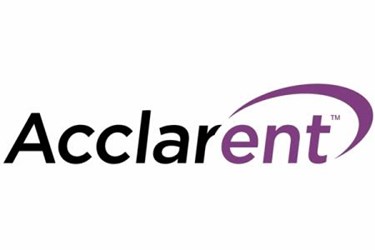J&J's Acclarent Wins FDA Nod For Eustachian Tube Balloon Dilation System

Johnson & Johnson (J&J) subsidiary Acclarent announced that the FDA has awarded de novo approval to its balloon dilation system, the Aera System, which joins J&J’s portfolio of minimally invasive therapies for ear, nose, and throat (ENT) conditions. Aera is indicated for the treatment of persistent eustachian tube dysfunction (ETD).
The eustachian tube is located in the middle ear and typically is filled with air — controlled with a valve — to maintain equalized pressure. Conditions that block or constrict this tube can cause patients to feel pain or pressure, or to suffer hearing loss, according to Mount Sinai Hospital. Chronic ETD typically is treated with oral antihistamines, pain medications, and nasal steroids (sprays). In severe cases, the condition may be treated surgically.
Clinicians using first-of-its-kind Aera technology insert a small catheter through the patient’s nose and into the Eustachian tube, where they inflate the balloon to dilate the tube. Once the tube is open, the clinician then deflates and removes the balloon. According to an FDA press release, a clinical trial with 299 ETD patients demonstrated that. 52 percent of patients tested within the normal range of middle ear function six weeks post procedure, compared to 13.9 percent of patients treated with medication.
“Restoring function to this important part of the middle ear may provide relief from the pain, discomfort, and sensation of ear fullness or blockage associated with ETD,” said Malvina Eydelman, director of the Division of Opthalmic and ENT devices at the FDA’s Center for Devices and Radiological Health (CDRH).
The Aera system is not suitable for patients under the age of 22, patients with a protruding carotid artery, or a patulous (always open) Eustachian tube, said the FDA.
Dennis Poe, professor of otolaryngology at Harvard Medical School and Boston Children’s Hospital noted in a press release that typical treatments of ETD address symptoms of the problem but not the condition itself. “As discussed at the recent American Academy of Otolaryngology annual meeting, doctors do their best to treat these conditions, but until now — with the launch of Acclarent Aera — options did not address the root of the problem with the Eustachian tube itself.”
The FDA also recently approved Acclarent’s Relieva Scout Multi-Sinus Dilation System, a similar balloon system indicated for dilation of the sphenoid, frontal, and maxillary sinuses. The system is a novel and minimally invasive alternative to sinusitis treatments that typically turn first to medications.
Acclarent announced clinical trial results earlier this month that demonstrated greater improvements in patient’s overall quality of life with balloon sinuplasty (BSP) technology compared to continued medical management. The study was published in the American Journal of Rhinology & Allergy.
In a recent guest column, analysts from iData research stated that balloon sinus dilation (BSD) — which was pioneered by Acclarent — is poised to have a massive impact on the ENT market as the minimally invasive treatment become more widely accepted and insurance coverage is more readily available.
